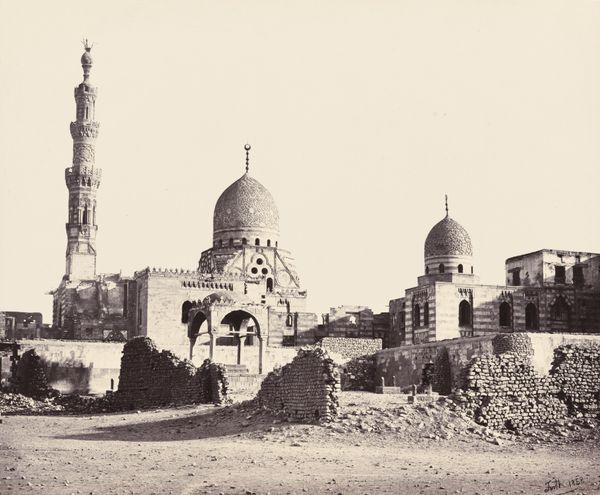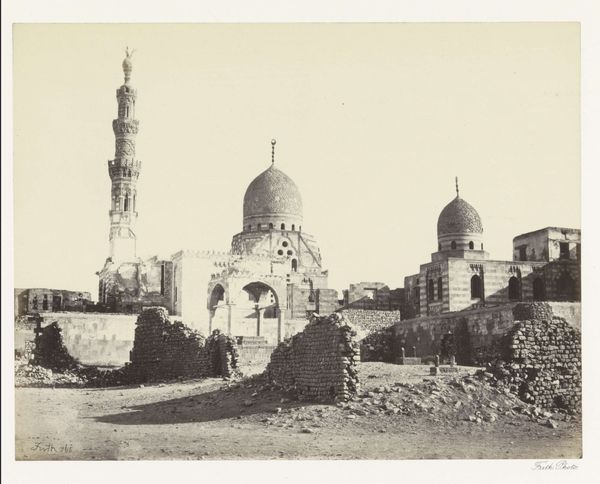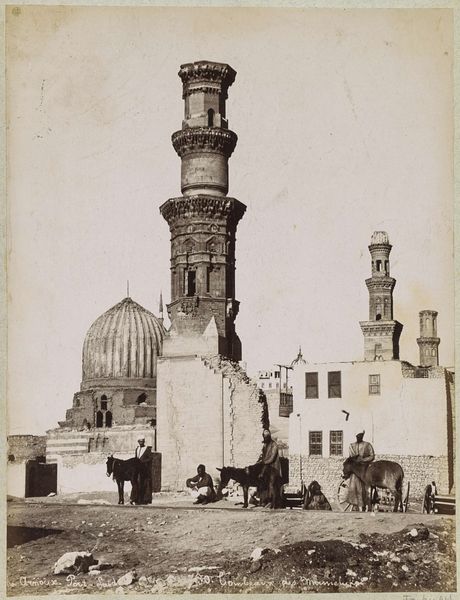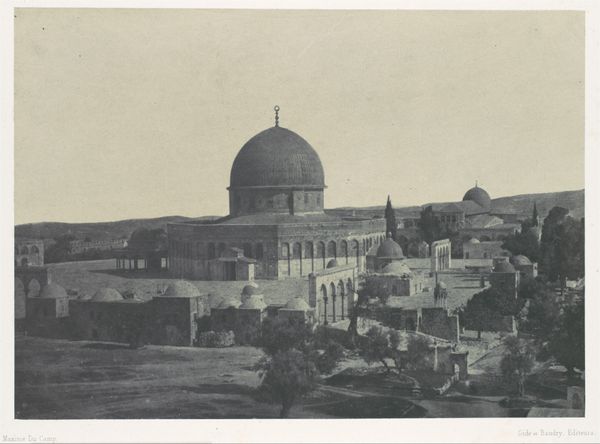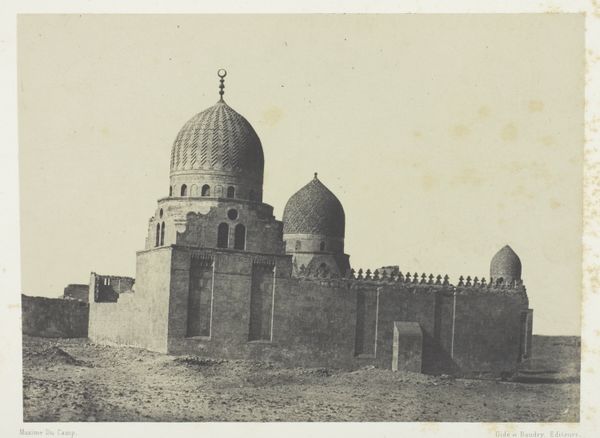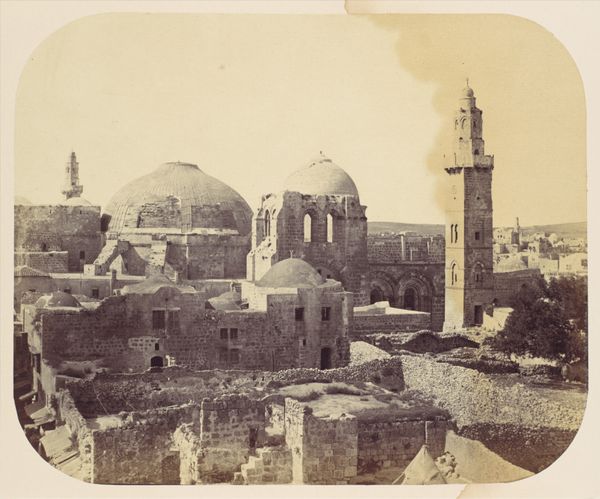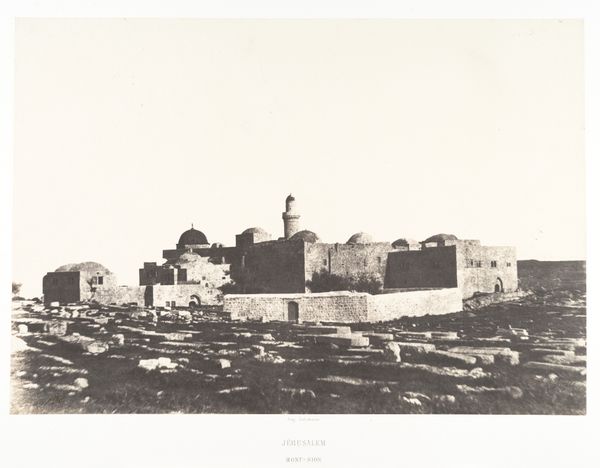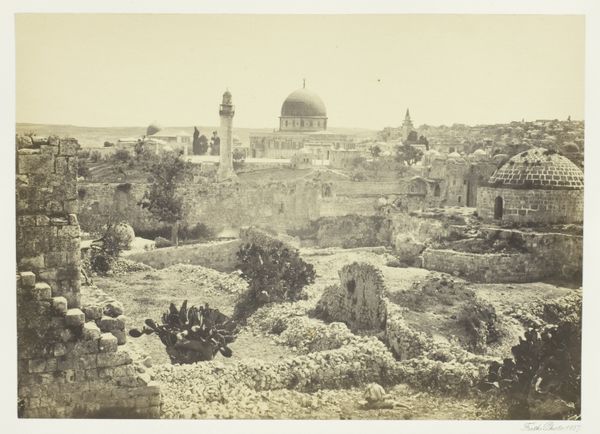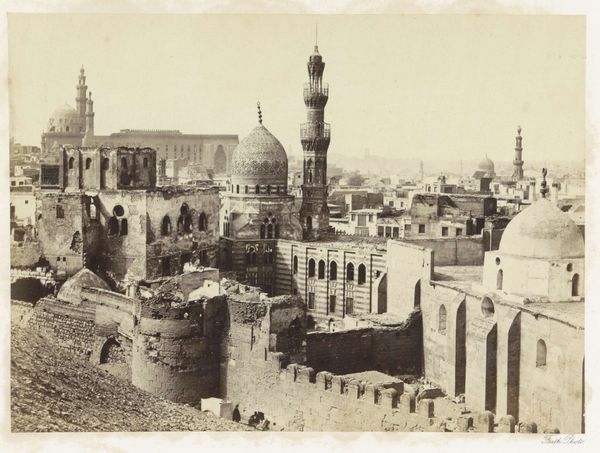
photography, albumen-print, architecture
#
landscape
#
outdoor photograph
#
outdoor photography
#
photography
#
ancient-mediterranean
#
monochrome photography
#
cityscape
#
islamic-art
#
albumen-print
#
architecture
#
monochrome
Dimensions: 24.3 x 30.4 cm. (9 9/16 x 12 in.)
Copyright: Public Domain
Curator: This striking albumen print from 1851-52 captures the grandeur of "Le Kaire, Mosquée Nâcéryeh," by Félix Teynard. Editor: My first impression is the way light almost sculpts these aged architectural forms; there's such texture in the monochrome. Curator: Precisely. Teynard's meticulous rendering of light emphasizes the interplay between geometric shapes and aged materiality within the ancient Islamic cityscape. Look at the deliberate contrast: the sharp angles of the minaret against the rounded dome. Editor: And I find myself considering what was required of him physically – and chemically – to capture this particular vista with such sensitivity. The materials, the travel to Cairo itself... These aspects root it firmly in the material circumstances of photographic production at the time. It seems there’s a subtle record of nineteenth-century labor embedded here. Curator: Undeniably, but let's consider the structural elements, too. The composition subtly guides our eye upwards, emphasizing the mosque as a focal point, even amidst the sprawling urban landscape that acts almost as an imperfect, contrasting frame. Editor: Right, though for me, I can’t unsee the socio-political element too. The construction material itself becomes charged when we think about labor and economy. Whose hands built this, and at what cost? How might Teynard have considered his position, capturing this site? Curator: Such a question is an important provocation. Nonetheless, consider also that through the formal manipulation of tone and perspective, Teynard invites contemplation on enduring architectural form – the capacity for shape and mass to transmit meaning across cultural contexts. Editor: Perhaps. I appreciate how this discussion calls our attention to varying perspectives and methodologies. Thinking through photography this way allows us to pose thoughtful questions that prompt greater understanding, from many points of access. Curator: Agreed. By analyzing both the visual language and considering those wider production elements, we glean greater insights into the multiple registers operating simultaneously in this work.
Comments
No comments
Be the first to comment and join the conversation on the ultimate creative platform.
